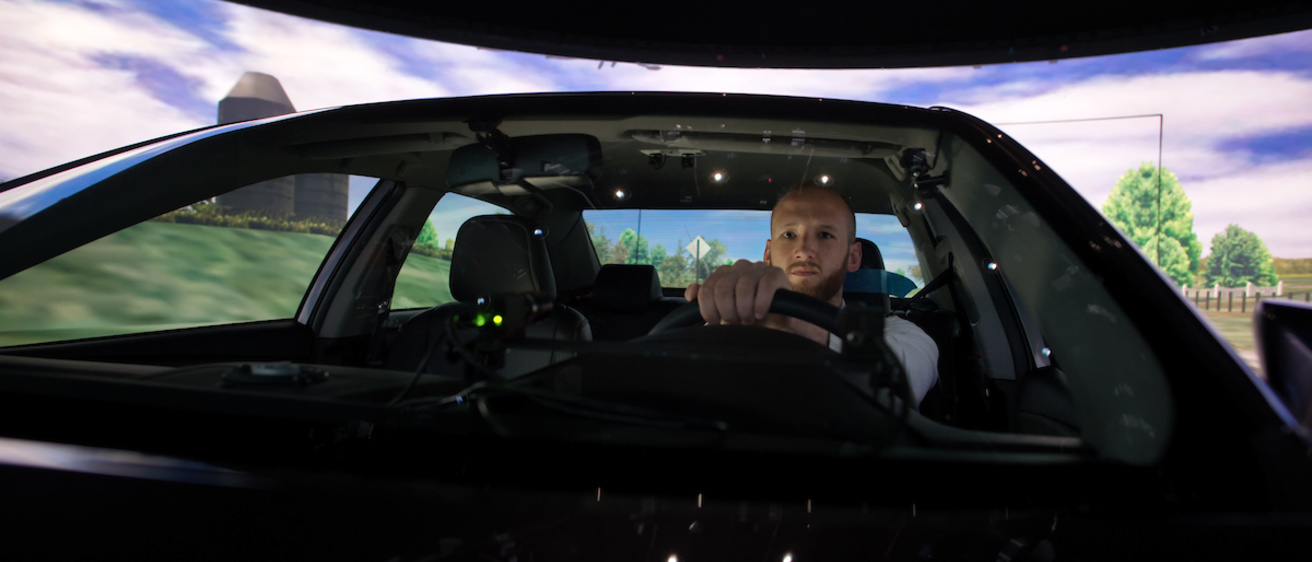For many people, quickly sending a text or email while behind the wheel is just second nature.
But for Jacob Heiden, studying those few seconds of swiping, typing, and sending has become a fulfilling career.
Heiden, a 2015 graduate of the Interdepartmental Studies program within the University of Iowa College of Liberal Arts and Sciences, says he was surprised to learn that he could make a career out of studying texting and driving.
But that’s exactly what the Denison, Iowa, native did. After spending his senior year working at the UI’s National Advanced Driving Simulator and another year there as a temporary research technician, he was hired as a permanent research support coordinator.
Heiden, 23, spends hours each day helping find ways to stop you from using your smartphone while operating a vehicle.
The National Advanced Driving Simulator (NADS) is located at the University of Iowa’s Oakdale Research Park. It is the nation’s premier driving-simulation research and development facility. When it became operational in 2001, NADS was the first simulator of its kind anywhere in the world.
To date, it has generated more than $55 million in research contracts for the U.S. Department of Transportation and the automotive and pharmaceutical industries.
“It’s a very interesting workplace to say the least,” Heiden says. “It definitely has exceeded my expectations.”
During any given week, he may either be traveling across Iowa or just across the room.
One minute he’s behind the wheel of the UI’s miniSim driving simulator—roughly the size of the front seat of a Toyota Camry—and the next he’s traveling to rural Iowa communities to educate seventh, eighth, and ninth graders about the dangers of texting and driving.
Heiden says he never expected an interdepartmental studies degree that included a health science track with an entrepreneurial emphasis would land him at one of the nation’s premiere research centers.
But he says he can’t imagine working anywhere else.
“It was literally almost like a dream come true, even though I didn’t know what to expect,” Heiden says, recalling his opportunity to work at NADS as an undergraduate.
He briefly considered jobs at Epic Systems and Ford, as well as trying for something at the epicenter of tech and entrepreneurship: Silicon Valley. But none of these were the right fit.
“I was really hoping this would go through,” he says of his current role. “I didn’t know what would happen when I started, but I just kept going on the ride to see where it took me.”
Today, Heiden is one of 18 full-time NADS employees who specialize in studying the connections between humans and vehicles.
He has worked on studies related to cannabis, alcohol, and pharmaceutical drug use to see the impact each has on a person’s brain and body when operating a vehicle, and he has been involved in research projects examining advanced vehicle technologies.
Heiden also recently completed a training manual for a simulation study in Florida.
When asked what the most rewarding aspect of his job is each day, Heiden says, “Knowing that hopefully you can make a difference, save a life. You’d rather see them experience it here on the simulator than actually behind the wheel.”
